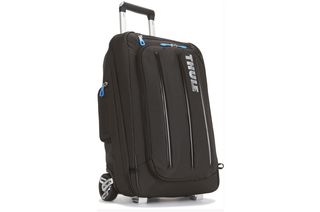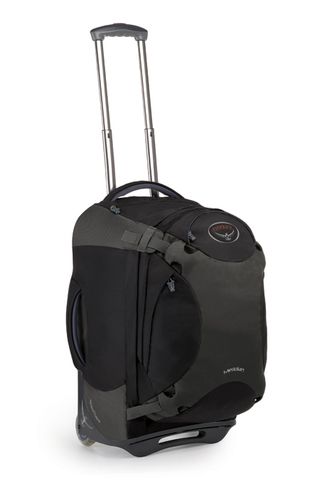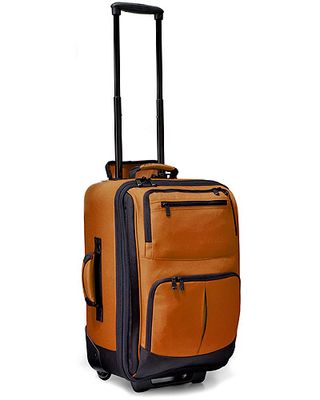
Rising luggage fees and headaches at baggage claims now prompt many travelers to avoid checking a bag before boarding a flight. Instead, experienced travelers plan strategies to maximize carry-on allowances, including stuffing their jacket pockets full and stretching airlines' rules by bringing a backpack or a huge purse as the allowed “one personal item” to stow under the seat.
But the most important part of the carry-on formula is still a primary bag or suitcase to store in the overhead compartment. It can be a duffel bag, a backpack, or, as I prefer, a square suitcase with a handle and two wheels.
Over the past year, on domestic flights as well as for trips to Europe, Asia, and South America, I tested a handful of wheel-equipped suitcases. Several outdoor-industry companies, from Wenger to High Sierra to Eagle Creek, make these types of bags, and many offer similar features and similar price tags.

Capacity hovers at around 2,500 cubic inches for the largest suitcases in the category. With these big bags, I can tote a few days worth of clothing and gear. Or, on expeditions and big adventures, the carry-on bag is a piece in the larger luggage puzzle. I try to avoid the huge fees that come with checking multiple pieces of luggage by loading up my carry-ons.
I pack my carry-on suitcases with heavy, valuable, and fragile items, keeping them close and safe as I travel domestically or abroad. My laptop and camera are always included. But I have stowed flashlights, ropes, carabiners, ski boots, and other heavy and bulky gear in a carry-on case as well.
A few bags I tested, like the GoLite TraveLite and the Thule TCRU-1, include hide-away backpack straps. When you can't roll it anymore, the straps slip out to let you shoulder the bag. Osprey's Meridian 22 one-ups the proposal with an integrated zip-off daypack. It can be used as a separate luggage piece or mated to the suitcase and frame.
Features vary from bag to bag, but all have two wheels and a long retractable handle. Some include padded laptop sleeves and special features to speed bag checks and TSA lines. Thule includes a unique padded sunglasses pocket on the side for quick access to optics on a trip.

After a year of travel, my favorite bags ended up being the most simple ones. I rarely employed backpack straps or special pockets. In airports around the world, my primary concern was capacity and airline allowance. Stuff it with gear, roll it on the plane, hoist the bag away, and let's fly!
–Stephen Regenold is founder and editor of .